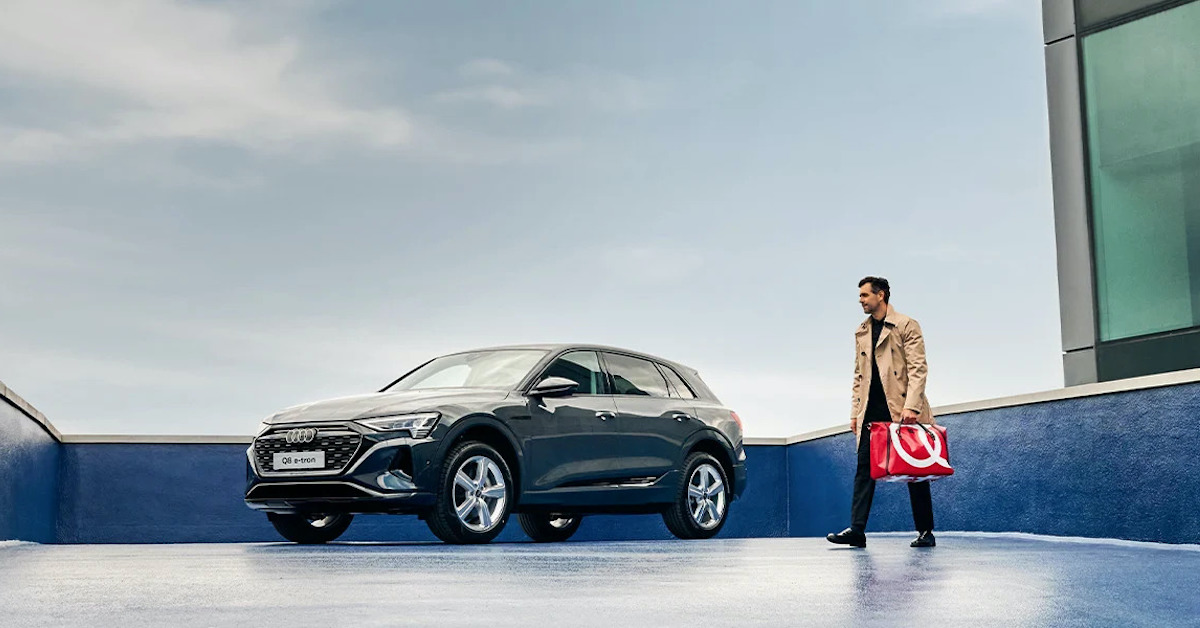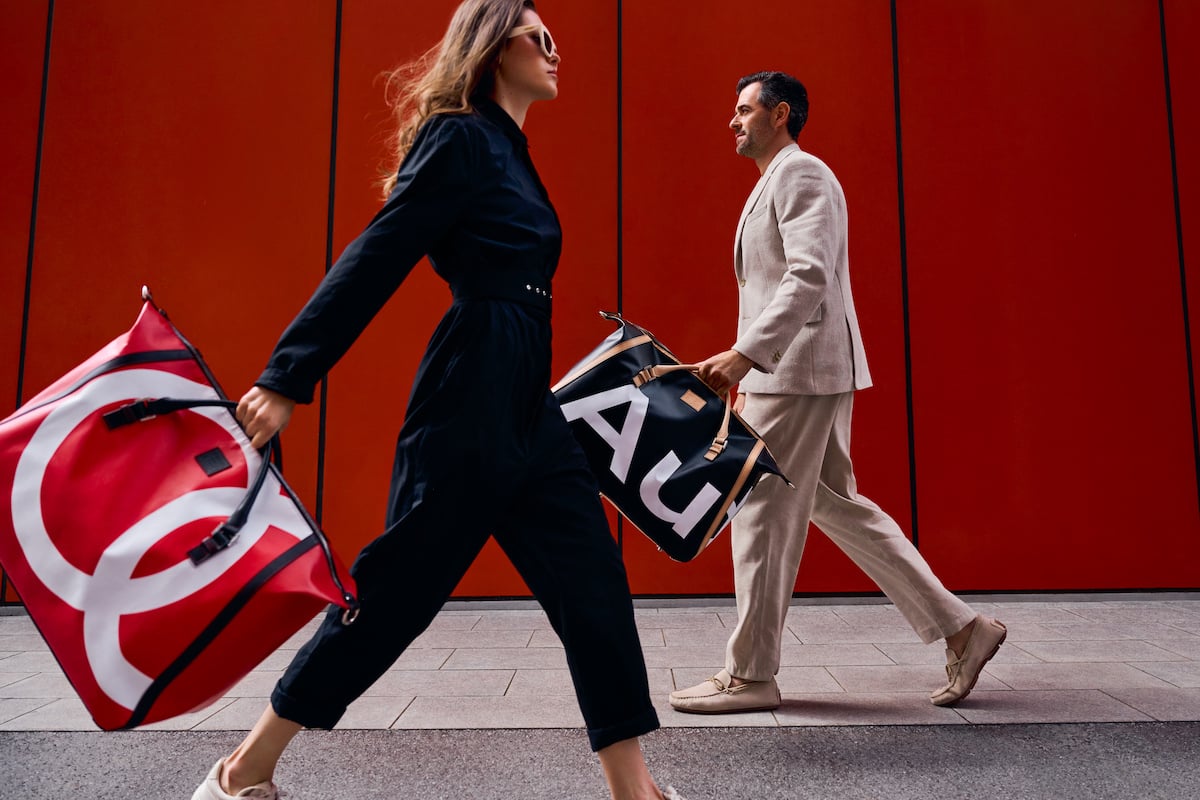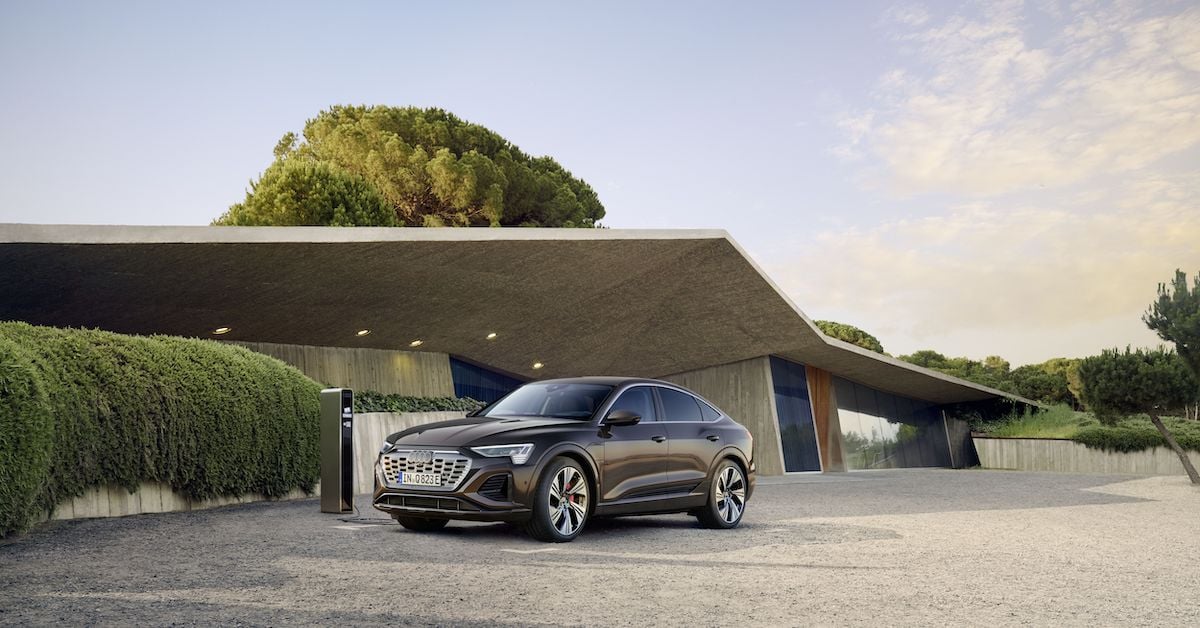
Never Refuse to Reuse > Progress is not always linear
Progress is not always linear
Irena Fonda has always had a close relationship with the sea. Thirty years ago, her father had the idea of a marine oasis, a concrete underwater structure that would serve as a sanctuary for marine animals. He was unable to build it at the time, but he and his family explored solutions from other vantage points. They built a somewhat unusual, special fish farm, one that had a positive impact on the surrounding marine organisms. Now, partly due to the changed situation in Europe, she and her brother Leon Fonda have decided to revive the original idea, improve it and launch a pilot project with the YouSea Institute to create a marine oasis dedicated to research and raising awareness about the importance of sustainability, new ways of obtaining food from the sea, and preserving biodiversity. As Irena Fonda told us in the interview, progress is not always linear but always involves seeking better ways to achieve sustainable solutions.
Napredek ni vedno linearen
Irena Fonda je že od nekdaj zelo povezana z morjem. O ideji morske oaze, podvodne strukture iz betona, ki bi služila kot zatočišče morskim živalim, je njen oče začel razmišljati že pred tridesetimi leti. Takrat mu je ni uspelo postaviti, so pa z družino iskali rešitve po drugi poti. Postavili so nekoliko neobičajno, posebno ribogojnico, tako, ki pozitivno vpliva na okoliške morske organizme. Zdaj, tudi zaradi spremenjenih razmer v Evropi, sta se z bratom Leonom Fondo odločila prvotno idejo oživiti, jo nadgraditi in s sodelavci zavoda YouSea postaviti pilotski projekt morske oaze, ki bo služila za raziskovanje in ozaveščanje o pomenu trajnosti, novih načinih pridobivanja hrane iz morja in ohranjanja biotske raznovrstnosti. Kot nam je Irena Fonda zaupala v pogovoru, napredek ni vedno linearen, vedno pa vključuje iskanje boljših poti do trajnostnih rešitev.
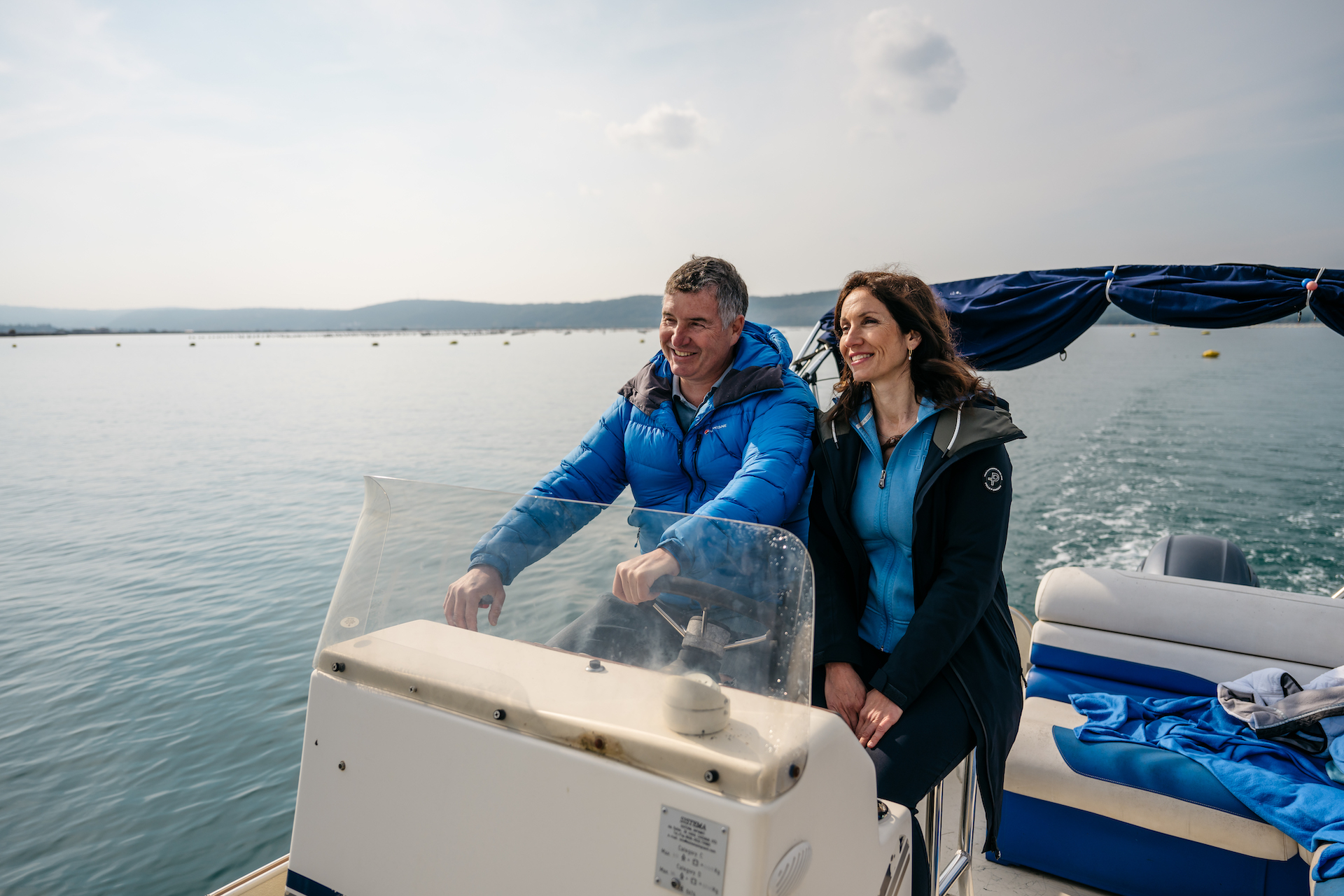
You have always had a close relationship with the sea. Why?
The sea is very important in my life. From an early age, my brother and I often accompanied my father, who was a professional diver and spear fisherman, to his work and developed a love for the sea. I have many fond memories of the time we spent together at and in the sea. We took our rucksack, sleeping bag, tools, and water and went for a few days to the salt flats, which were completely deserted at that time, to explore the sea and marine life. We also spent all our holidays by the sea. I think that was invaluable. In this way, my father passed on his values to my brother and me, and these values have been decisive for both our lives. I feel so strongly about the sea, I find it magnificent and beautiful. If you are in a low mood, you go to the sea, dip your feet in it and you immediately feel better. Everyone in the family is involved in biology and we share a love of the sea and life in it. My attachment to all organisms that live in the sea stems from my love of the sea, and I admire and respect this life.
Allowing myself a philosophical outlook, I would say that we all are the sea. Not only because we are mostly made up of liquid, which is similar in composition to the sea, or because we are affected by the moon just as the sea and its tides are. I often say that if you dip your toe in the sea, you are suddenly all over the world because the sea and the oceans cover most of the Earth's surface. The sea is a medium, much like the air, that connects everything, really.
How has the sea and life in it changed and is still changing?
It’s certainly changing. If you are a good observer, the changes are apparent, on land and in the sea. Certain species appear that were not there before, some species migrate on their own, some are brought by humans or are transported by water or ships. Now there is significantly more communication with the world, ships come in from all over the globe, bringing species that were not here before. But there have also been some improvements. For example, thirty years ago, in the late 1980s, we had a lot of problems with hypoxia and anoxia (reduced oxygen content or oxygen deprivation). This has been devastating for a large number of animals living on the seabed. It caused the overgrowth of planktonic algae, which can't be seen with the naked eye but cover a large area of the sea. When they died, they slowly sank to the bottom, and since oxygen is used for their decomposition, the area near the bottom was left without oxygen. These blooms have been linked to excessive phosphate in the sea, mainly from washing powders. Today, these problems are far less severe as today's detergents contain fewer phosphates and nitrates. We need to be aware that everything we do on land ends up affecting the sea. Many people think, “Why would I be interested in the sea if I live in Ljubljana?”. But everything you do in Ljubljana affects the sea. None of us acts only locally.
Today, there are fewer problems with polluted seas, there is less organic pollution, but on the other hand, there is significantly more plastic, more chemicals, more tourism, more traffic, more industry, all of which have a negative impact on marine life.
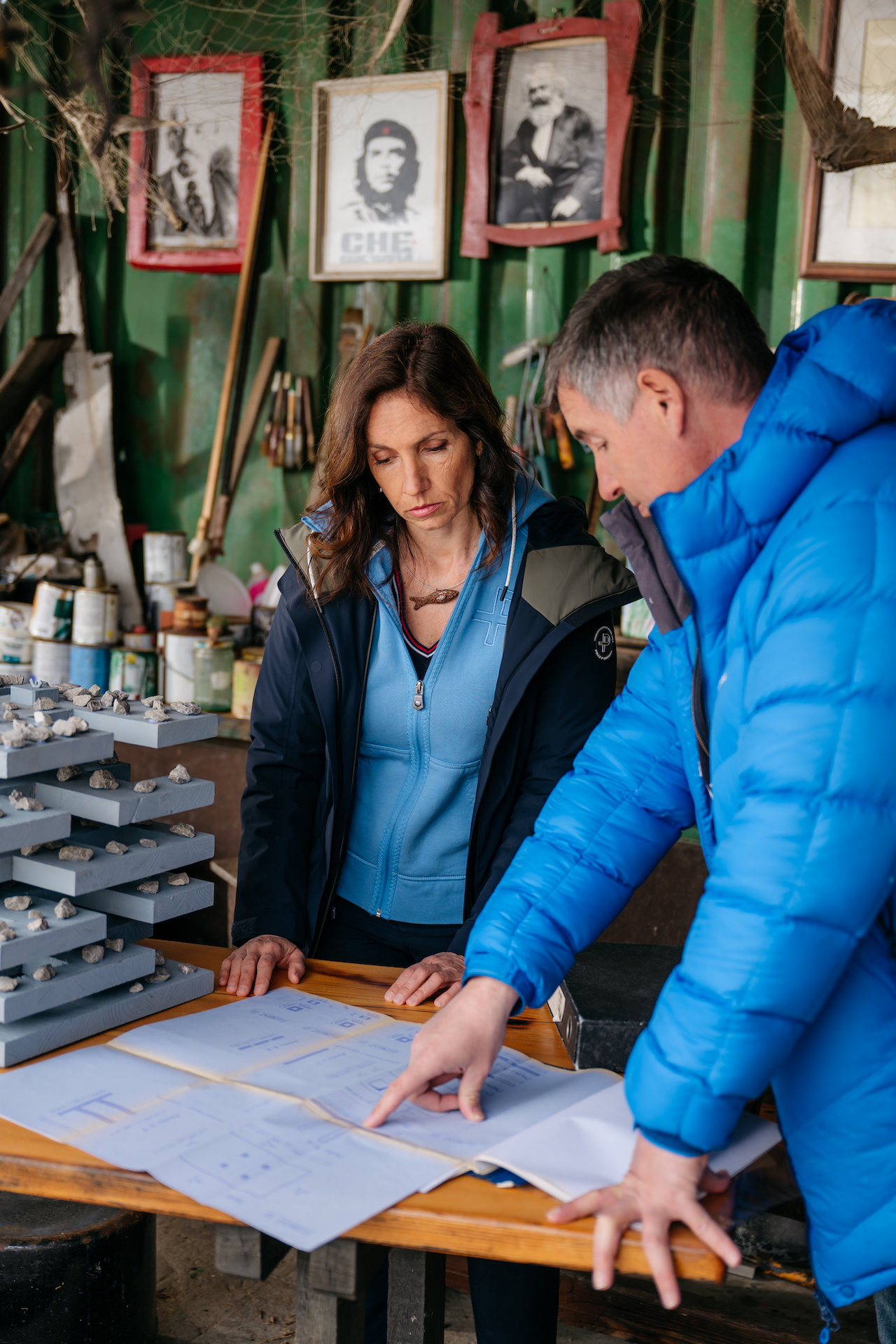
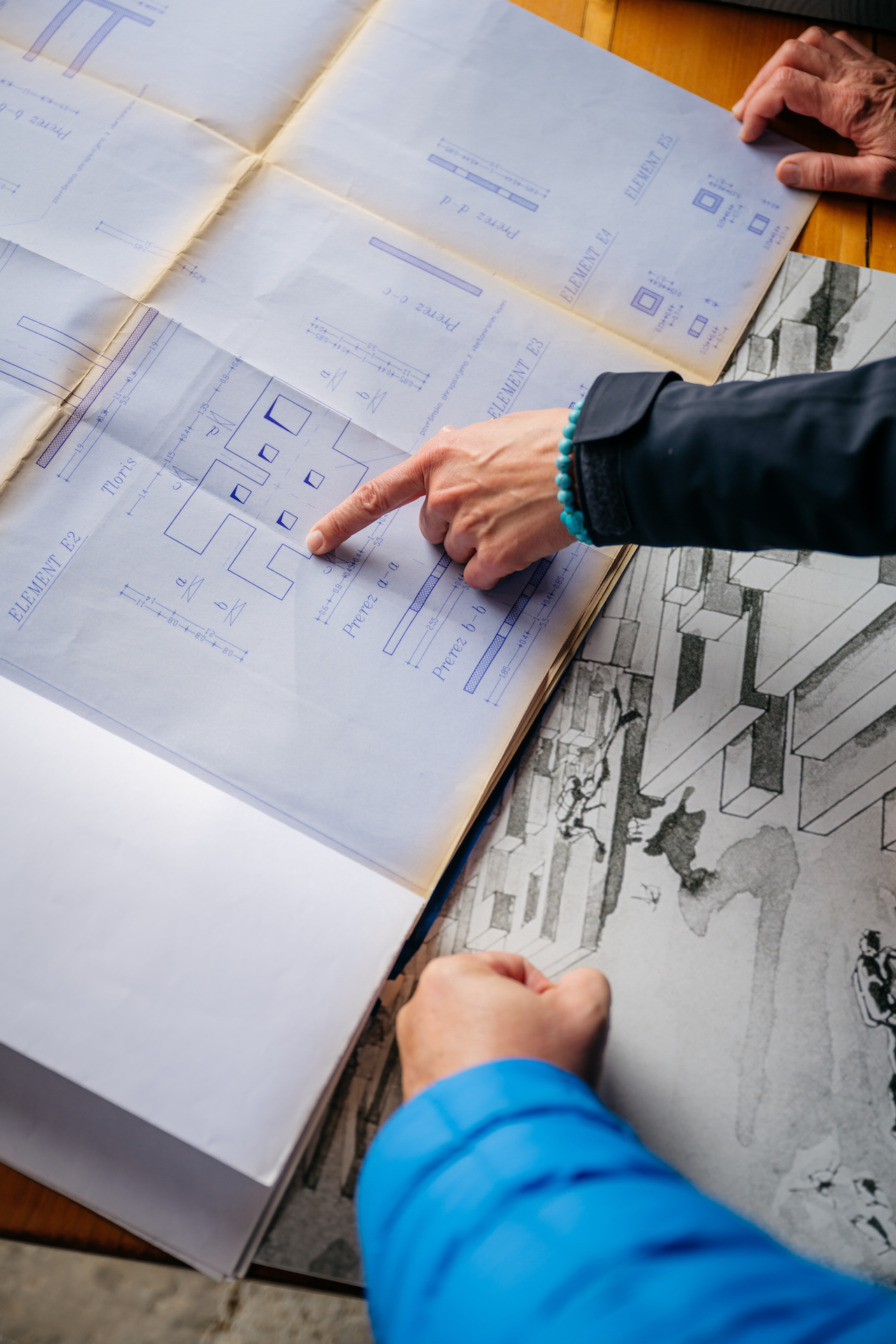
Where did the idea of a marine oasis come from?
During his work, my father noticed that certain animals, especially large specimens, were becoming scarce. I remember how he used to say, "There will be a scorpionfish here, a conger eel here, a lobster here, squid and cuttlefish eggs over there, here an octopus nest." He knew their habitats. Then there were fewer and fewer of these organisms, and they were mainly small specimens. He thought about what he could do. Something that would be good for the sea, so that he could observe life growing and developing there and show it to others as a diving instructor. He knew how to build underwater and had the idea of constructing something similar to natural underwater reefs. So, about 30 years ago, he came up with the idea of building structures underwater for life to settle on. Like a kind of 'underwater reforestation' – it's not quite the right word, but it serves as an illustration.
He didn't succeed then, but that didn't stop us. We thought that if we can't get achieve our goal directly, we should take a detour and find another way to create a sanctuary for the animals. Our fish farm was the result. It started as a romantic idea of how we could do something good for the sea, not so much as a marketable project. We wanted our fish farm to be different from conventional fish farms and have a positive impact that would be good not only for us and our fish but also for the wildlife living close to the farm. And indeed, this positive impact became apparent very quickly. A huge number of animals and plants have colonised all the underwater structures in and around the fish farm. This made us very excited. Now, 30 years later, the situation has changed. Europe has recognised and offered the opportunity to move towards a more sustainable multitrophic aquaculture and has emphasised the importance of various underwater structures for this purpose. It has set new guidelines that support this and thus enable the development of new approaches for obtaining food from the sea.
In addition, we now have different tools to communicate with the public, and people are more receptive to sustainability, the environment and progress. There are now a variety of artificial underwater structures around the world that work very well for different purposes. There are more than 20,000 of them in Japan alone, there are already some in Italy and Croatia, and in the USA outside New York, for example, there are interesting constructions made from old subway cars that have been stripped of harmful parts and coatings. So, my brother and I and the other co-founders of the YouSea Institute started thinking about how we could build on the basic idea that our father had originally developed.
How does such a marine oasis actually work?
By providing a solid structure, it acts as a catcher of young organisms, similar to natural underwater reefs. These are made up of the hard parts of dead organisms, the remains of shells, corals, and algae, which are deposited on the seabed and form a solid, branched structure with holes and perforations in which other organisms settle: shrimps, clams, fish, etc. Marine organisms love such structures, they settle there very quickly, and they are usually linked to high biodiversity. It's nice because these structures are constantly changing and maturing.
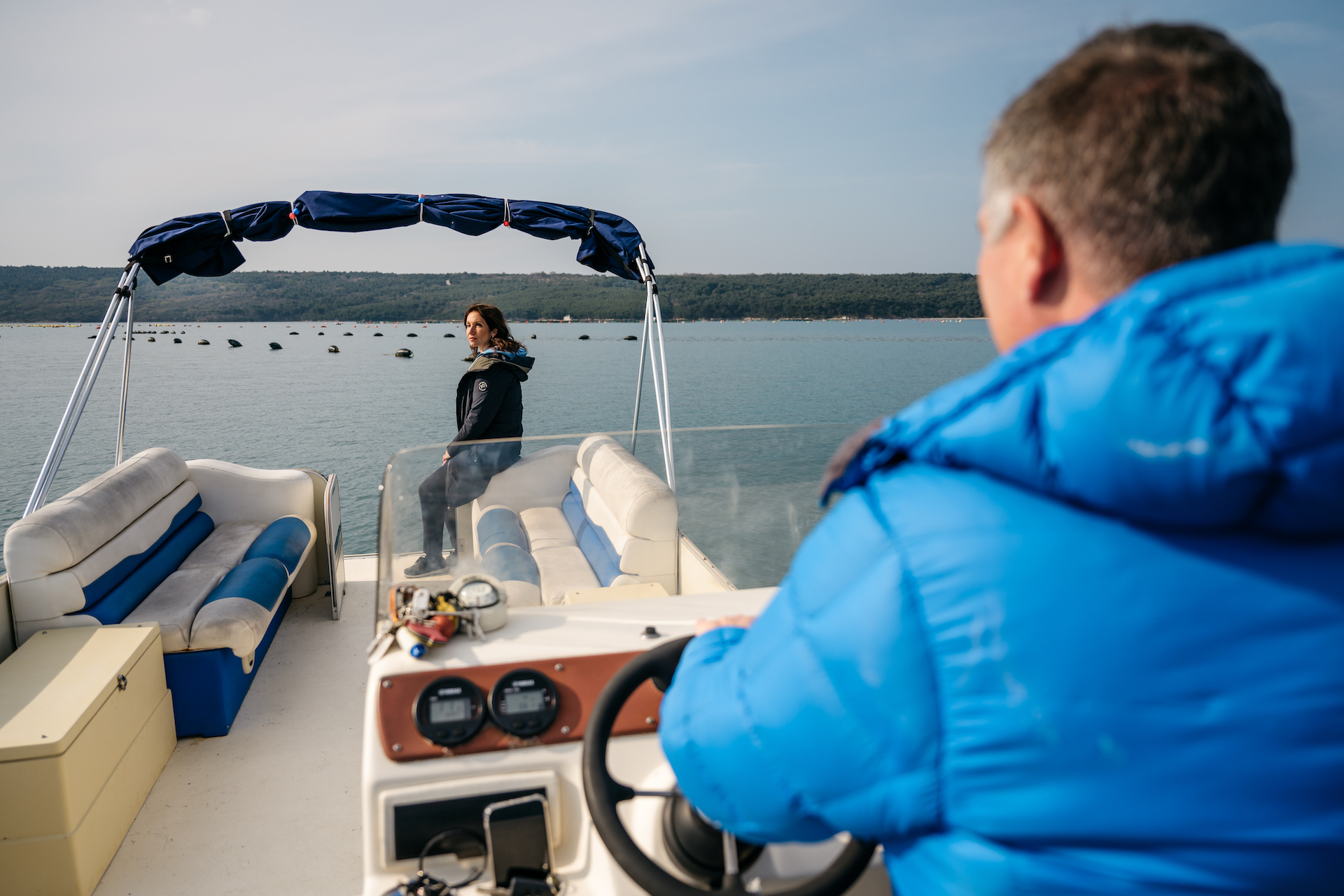
You will set up a marine oasis with the YouSea Institute. What is the main purpose of the institute?
The name of our institute YouSea is a little play on words, YouSea, written out with a space between the words, means "you and the sea", phonetically read the same but spelled "You See" means "do you see?", with an r in between it becomes "You(r)Sea", and finally it can be spelled the same but have a changed meaning when read as "You are Sea". All of which means "can you see your sea?". Our mission is to conserve marine biodiversity. This is a very difficult task, and as a minor player, we cannot directly make a big impact, but we can influence changes in habits through mechanisms such as awareness-raising. Each of us can take steps, however small, and these will in turn improve the health of the sea. Actions such as buying products with no or less packaging, recyclable packaging, and buying local food are also important, because shorter transport routes, less packaging, and fewer chemicals ultimately have a positive impact on the sea. Looking at something as seemingly banal as straws: although small, they are shaped in such a way that they are not filtered out by plastic sorting grids and often end up in the sea. And straws are not even vital, we live just fine without them, so why use them? The idea was to start raising awareness early, and we partnered with schools for that purpose. We named the project “Modre šole” (Blue Schools), not only because of the color – the sea is blue – but also because of the wisdom (transl. note: “moder” also means wise in Slovenian), these are thinking schools. We want schools to commit to certain behaviours that have a positive impact on the environment. Additionally, we wish to show them the diversity of life in our sea, which will be clearly visible in our marine oasis. The diversity is often depicted with beautiful pictures of tropical areas with colourful fish and corals, however, the biodiversity in the northern Adriatic is also very high, but we know less about it and therefore do not appreciate it enough. In our family, we have always tried to preserve it, and this is also the goal of our institute. It’s also important to cooperate with all other organisations that study the sea in our country, such as the Marine Biology Station, the Piran Aquarium, Algen, Labena, diving associations, underwater photographers, etc.
"The biodiversity in the northern Adriatic is also very high, but we know less about it and therefore do not appreciate it enough."
The marine oasis will also be a test of how such a structure functions underwater
We thought of making our marine oasis a pilot project, a study to see and explore how life will develop in and around it. In this way, we are also following the enthusiasm of our father, who liked to talk about how he would observe the underwater structure and see which organisms would come, which would settle, and what species would follow the first settlers.
Basically, such an oasis is about multiplicative effects. For example, we will be looking at ways to get juveniles of certain species to breed in the future. Currently, we breed less than ten species in the Mediterranean because we do not know how to acquire the juveniles of other species that may be of interest. In this way, we will contribute to a more sustainable way of producing food in the future.
Another thing we would like to study is how such structures perform in removing carbon dioxide from the sea. Most organisms that form shells – clams, shrimps, snails, etc. – bind CO2 they get from the water in their shells. Unlike plants, which quickly release CO2 after decay, CO2 is almost permanently trapped in shells and crusts. We will also be able to study their cleaning capacity. Most of the organisms that will be the first to attach to this structure will be filtering organisms that clean the sea. If underwater structures were placed in degraded areas, such as at the ends of sewage pipes, they could increase the self-purifying power of the sea and improve its quality and regeneration.
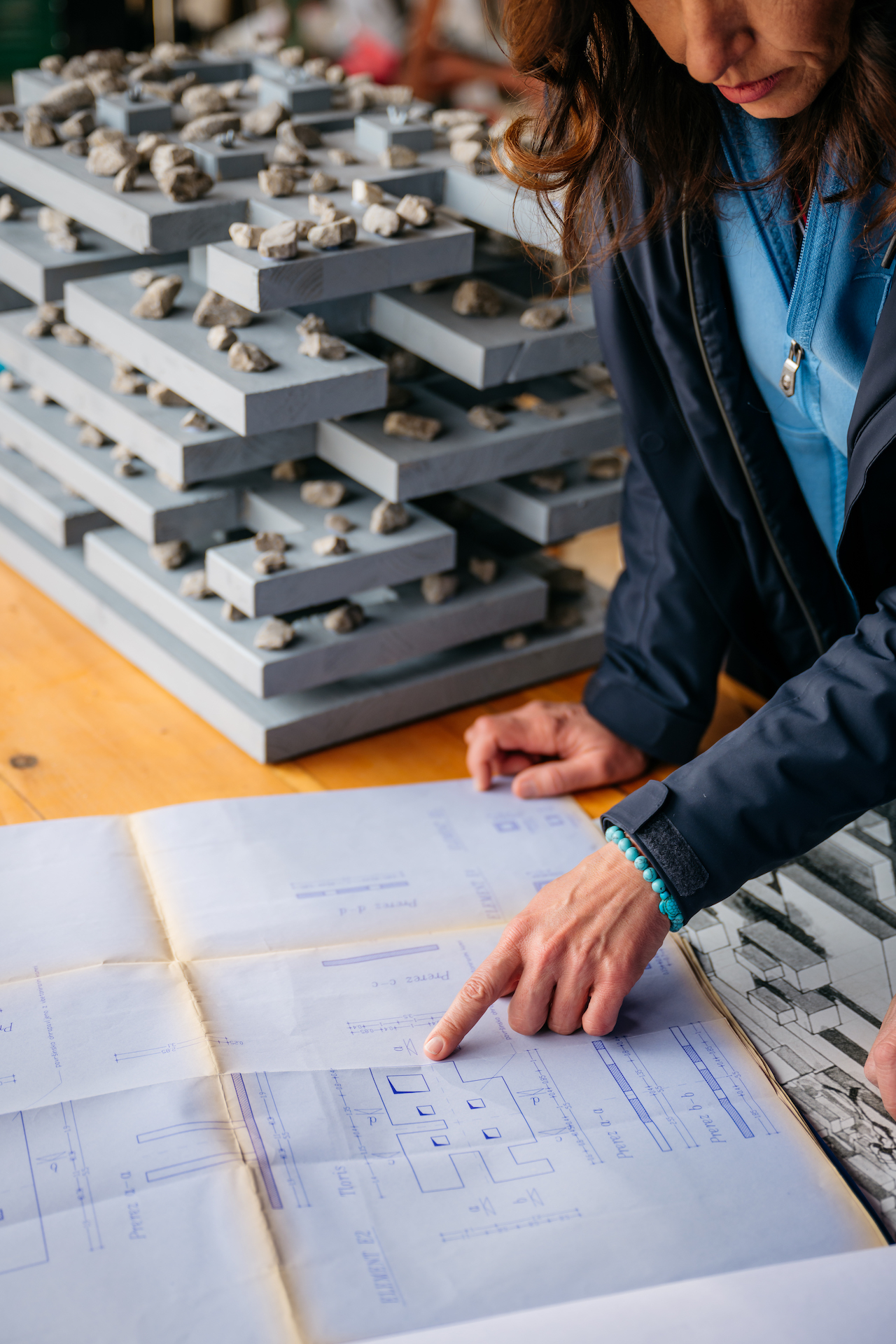
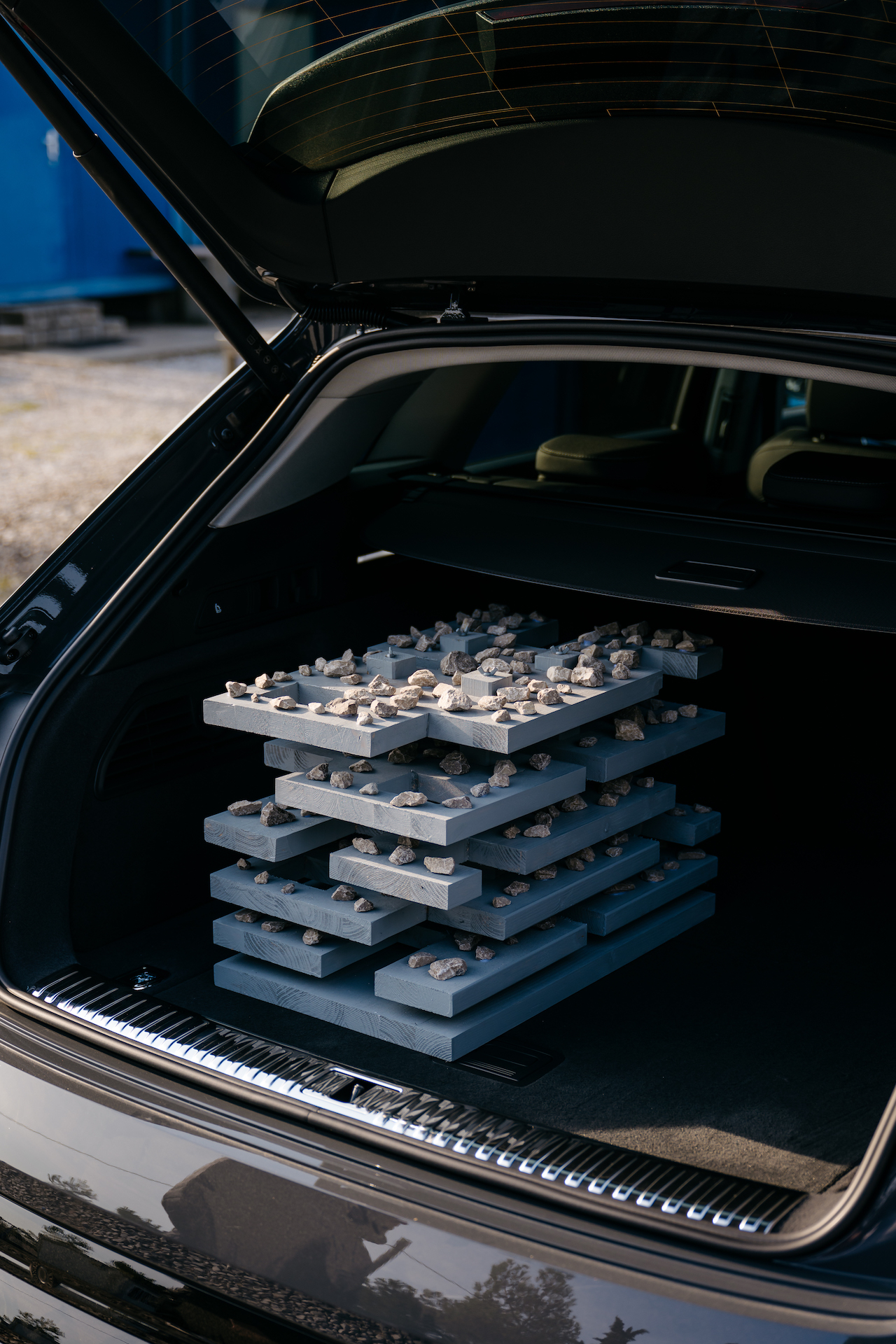
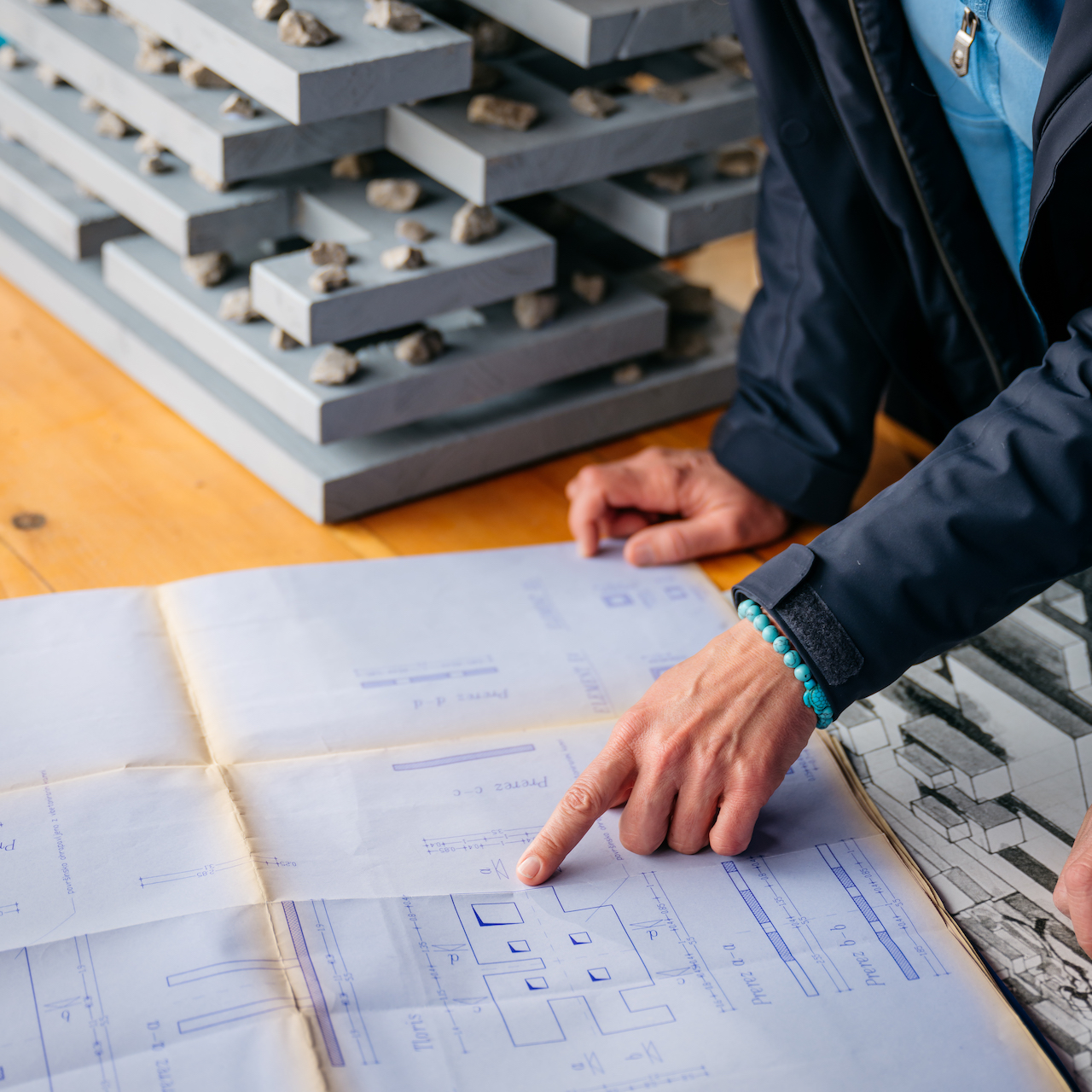
Irena and Leon Fonda looking at a plan of the underwater structure on which the marine oasis will be built.
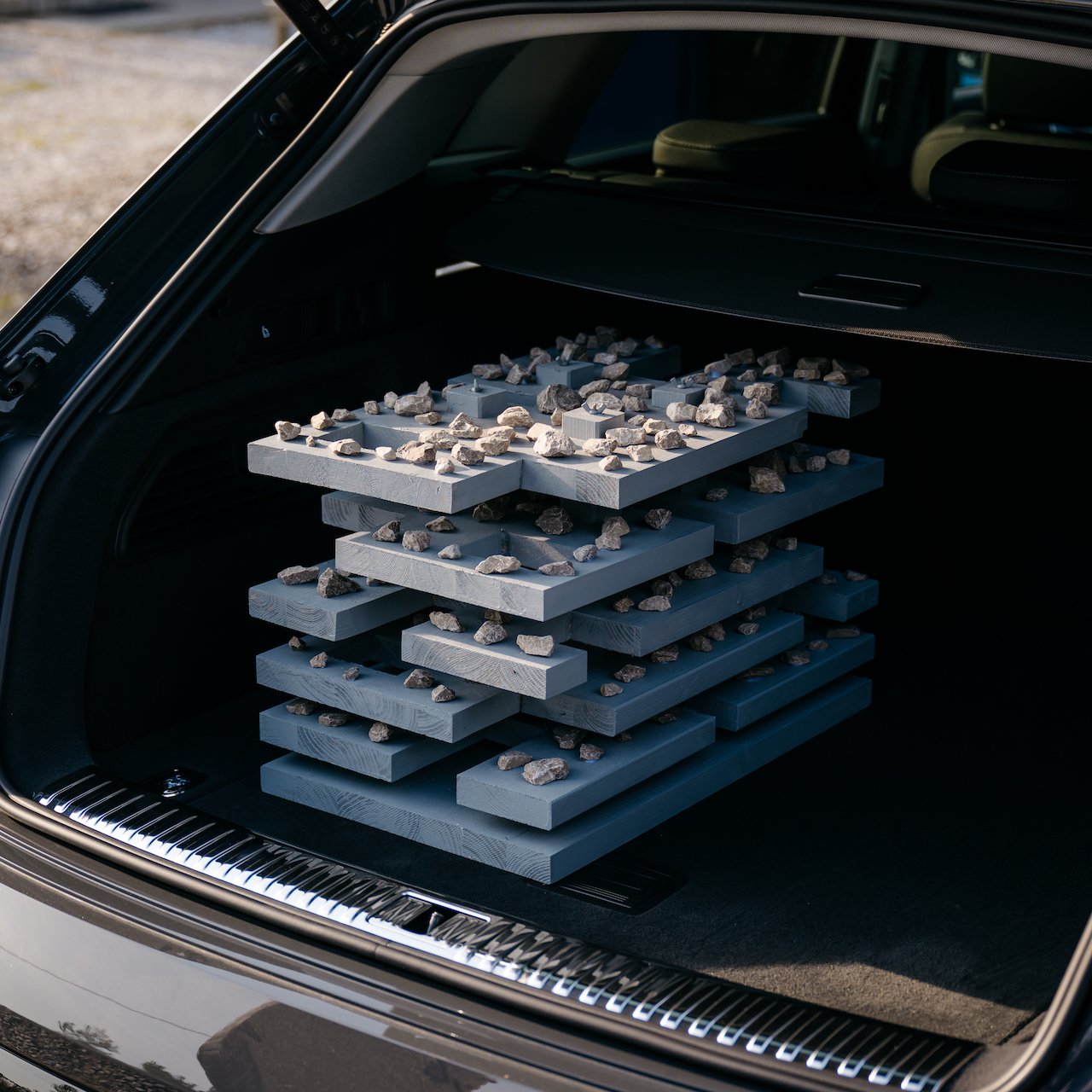
A model of an underwater structure to be built by the YouSea Institute in Piran Bay, in the spacious luggage compartment of the all-electric Audi Q8 e-tron.

Everything we do on land is reflected in one way or another in the sea. By driving more sustainably, we can also contribute to the health of the oceans. The all-electric Audi Q8 e-tron.
How soon will the results of the underwater oasis be visible?
Our aquaculture nets, which have been repeatedly olonized and washed, quickly show the first attached organisms only 14 days after being placed in the water. Concrete will take a little longer, but the organisms will certainly come. In the sea, there is great competition for space in nature. The first to attach has the space, the others do not, so we assume that it will be relatively quick. At first, we won’t see much, more like slime on the surface, but then the organisms visible to the naked eye will come. For example, when mussels and oysters settle on shellfish beds, we don’t see the larvae attaching to the surface at first, but when they start to grow, we see the shells as little black and white beads. Then the growth goes exponentially fast. I think we will see a lot of young attached organisms in a few months, and then the structure will become interesting for other organisms. First, smaller animals will come to see it, followed by larger ones. It will be interesting to see who settles at different heights and on different surfaces. In this underwater oasis, the young organisms will be protected from larger predators that might otherwise eat them.
How will the project develop, progress?
The development of the project also depends on finances. Such an underwater structure is expensive to set up and then to operate and monitor. We will continuously maintain and monitor the structure. Not too often, so as not to disturb the organisms, initially once a month. It may be that this design works perfectly, but it may also be that our design turns out to be less than ideal and we had better try a different design. It is necessary to try and see who will like this house. And of course, we will continue to communicate and raise awareness with the “Modre šole” (Blue Schools) project. We are about to have a closing event with one of these schools, and I am impressed by what the children have prepared and how they think.
Regarding funding, we first considered asking the public for help via crowdfunding. Because then it's not just a donation. When you give money, things become important to you, you start to believe in them more. That would make it easier to raise awareness, to educate. Money is important, but even more so is this personal relationship, that the project matters to people. We have already gained some supporters among individuals, but of course the support of established and recognised brands is even more important – Audi is one of them.
What does it mean to you to work with Audi on the marine oasis project?
The cooperation with Audi means a lot to us. Not only because of the financial support but also because we share similar values. Like Audi, we believe in sustainable development and progress, which isn’t always straightforward. Sometimes it's also necessary to pause, reflect, and find a better way to sustainable solutions for today and tomorrow. With a strong brand like Audi, our task of raising awareness takes on a different, much greater weight. We are very happy to be part of the Never Refuse to Reuse project. The brand gives it an innovative character, and Mario Hercog, who will design the bags, is an enthusiast who always thinks about progress. We also see Audi as our mobile partner. The mobility aspect is important to us because the sea is mobile, very mobile.
What does progress mean to you personally?
To me, progress means consciously moving towards change. Change is not necessarily always the best, but it teaches us something every time. Of course, we always want to work for something better, healthier for people, for nature, for a better future. But progress is not always linear, and it is not always straightforward. Sometimes it is very fast, sometimes it is slower, and sometimes nothing happens. But the bottom line is that those who are brave succeed. There comes a time when you don't do something because you are afraid of failure, but if you don't take that step, then there is no progress, no reward at the end. Progress can be a process that cannot be seen, but it always involves thinking, adapting, opening up to others. For example, when it comes to food, I often mention that it would be good to be a little retro-innovative. Our grandmothers ate local, seasonal food and didn't throw anything away. Today we talk a lot about economic efficiency and sustainability, but if we look at how much material is wasted, how much material is used for unnecessary things, the quantities are enormous. In this sense, I would like us to look back a little, to take a step back, and that is also why the project “Uporabimo uporabljeno” (Never Refuse to Reuse) is very close to my heart. It’s not waste material, but essentially a maturation of materials. When making bags from advertising banners, progress is also linked to creativity. To be able to turn one thing into something else is essentially a kind of transformation. Like a caterpillar that turns into a butterfly.
